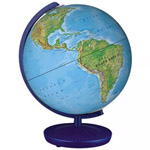Global Integrative Studies, School of

School of Global Integrative Studies: Faculty Publications
Document Type
Article
Date of this Version
1999
Citation
World Archaeology 30:3 Arctic Archaeology (February 1999), pp. 388–402.
Abstract
Stratified farm mounds with excellent organic preservation in the Lofoten and Vesterålen islands in Arctic Norway provide a long-term record of changing human use of fish. In Arctic Norway, zooarchaeological signatures of intensive dried fish production extend back into the Iron Age, indicating a substantial role for cured cod prior to the beginning of the historical stockfish trade in c. AD 1200. North Norwegian chieftains of the late Iron Age and Viking periods clearly disposed of substantial staple surpluses of stockfish as well as the better documented prestige goods (furs and ivory). A comparative study of substantial collections spanning the Iron Age–Early Modern period underlines both continuity and change in the developing North Norwegian fisheries and suggests the complexity of interaction between subsistence and commercial fishing.


Comments
Copyright © 1999 Taylor & Francis/Routledge. Used by permission.